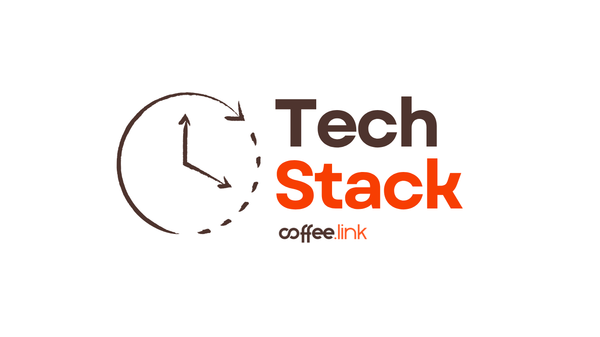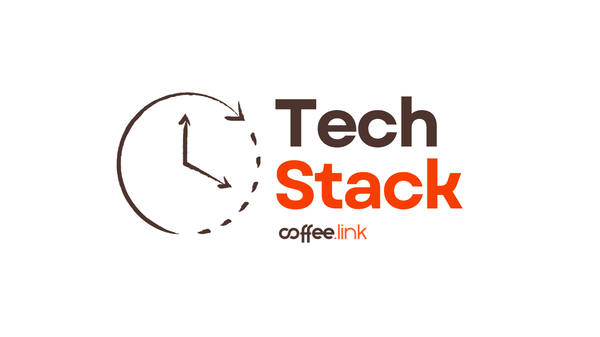DeepMind just won the Nobel Prize for solving protein folding with AlphaFold. More interesting: they gave away 214 million protein structures for free, then turned around and signed $3 billion in pharma deals. Here's how the technical breakthrough works, why the business model is genius, and what opportunities it creates for founders.
The Technical Achievement: 50 Years to 2 Days
Proteins are biological functions compiled into 3D structures. The compiler (physics) takes a 1D amino acid sequence and folds it into a specific shape that determines what the protein does. Wrong fold = broken function = disease. For 50 years, determining one protein structure required either:
- X-ray crystallography: 6-12 months, $100K-$500K per protein
- Cryo-EM: Faster but needs $7M equipment
- NMR spectroscopy: Only works for small proteins
By 2020, we had 170,000 solved structures total. AlphaFold 2 hit 92.4% accuracy on CASP14 (the protein folding competition), essentially solving the problem. AlphaFold 3 (May 2024) extends this to protein-DNA/RNA interactions and drug binding with 50% better accuracy than previous methods.
The technical approach: AlphaFold uses a transformer architecture (yes, attention is all you need for proteins too) combined with:
- Multiple sequence alignments (MSA) to find evolutionary patterns
- A structure module that iteratively refines 3D coordinates
- End-to-end differentiable architecture trained on PDB structures
- Geometric constraints built into the neural network architecture
Key insight: Proteins that evolved together often interact, so coevolution patterns in MSAs reveal structural constraints. The model learns these patterns from 170K known structures and generalizes to 214M predictions.
The Competitive Landscape: Speed vs Accuracy vs Openness
Meta's ESMFold (November 2022)
- 60x faster than AlphaFold
- Uses protein language models (pLMs) - treats amino acids like tokens
- Single sequence input, no MSA required
- Slightly lower accuracy but scales better
- Fully open source, Apache 2.0 license
RoseTTAFold (University of Washington)
- 10 minutes on a gaming GPU
- Three-track neural network processing 1D, 2D, and 3D information
- Open source but academic license
Boltz-1/Boltz-2 (MIT, December 2024)
- Matches AlphaFold 3 accuracy
- 1000x faster than traditional methods
- Fully open source (MIT license), commercial use allowed
- Can run on consumer hardware
- Built specifically to counter AlphaFold 3's closed approach
OpenFold (Columbia University consortium)
- Complete reimplementation of AlphaFold 2
- Training code included (AlphaFold didn't release theirs)
- Backed by $50M in compute from multiple institutions
The pattern here: Every time Google locks down features (AlphaFold 3's restrictions), the open-source community routes around it within months.
The Business Model: Give Away the Razor, Sell the Blades
DeepMind's strategy is brilliant:
- Release AlphaFold 2 (2021): Completely open, changes academia forever
- Build database (2022): 214M structures, free to everyone
- Create dependency (2022-2023): 2 million researchers now rely on it
- Launch AlphaFold 3 (2024): Better accuracy, but restricted access
- Monetize through Isomorphic Labs: Full AlphaFold 3 only available through partnerships
Isomorphic Labs deals so far:
- Eli Lilly: $1.5B (initial $100M, $1.4B in milestones)
- Novartis: $1.2B structure
- Multiple undisclosed partnerships
- $600M funding round in 2024
The genius: They commoditized the complement (basic structure prediction) to sell the premium product (drug-protein interaction modeling). Every academic using free AlphaFold becomes a potential advocate when their institution or company needs drug discovery.
What You Can Actually Build With This Today
Immediate opportunities (you can start this weekend):
- Protein design as a service
- Use RFdiffusion/ProteinMPNN with AlphaFold for validation
- Target: Biotech companies needing custom enzymes
- Example: Arzeda does $10M+ ARR designing industrial enzymes
- Structure-based drug screening
- Combine AlphaFold structures with molecular docking
- Much cheaper than experimental screening
- Atomwise raised $123M doing this
- Mutation effect prediction
- Predict how genetic variants affect protein function
- Direct-to-consumer genetic testing angle
- Could revolutionize rare disease diagnosis
- Agricultural biotech
- Engineer crop proteins for climate resistance
- Design proteins that block plant pathogens
- Huge market, less regulated than human therapeutics
Medium-term opportunities (6-12 months):
- AlphaFold fine-tuning services
- Most companies can't train these models
- Offer domain-specific fine-tuning (antibodies, membrane proteins)
- Sell to pharma R&D departments
- Protein interaction networks
- Map entire cellular pathways using AlphaFold 3
- Sell to drug companies for target identification
- Each new pathway worth $10M+ to pharma
- Enzyme engineering platforms
- Use AlphaFold + directed evolution
- Target industrial biotech (worth $250B by 2030)
- Examples: plastic-eating enzymes, biofuel production
The Open Source Arbitrage Opportunity
Here's what most people miss: AlphaFold 3 has serious restrictions:
- No commercial use without partnership
- Can't predict antibody-antigen interactions (blocked for safety)
- Rate limited to 20 predictions per day
- No local deployment option
Meanwhile, Boltz-2 (released last week):
- Completely unrestricted
- Runs locally on your hardware
- Similar accuracy to AlphaFold 3
- MIT license (commercial use OK)
The arbitrage: Build commercial services on open-source models while everyone thinks they need Google's version. You can literally offer "AlphaFold 3 equivalent" predictions with no restrictions. First-mover advantage is massive here.
Why This Actually Matters for Software Developers
Proteins are just another data structure. If you can work with:
- Graph neural networks (proteins are graphs)
- 3D geometry (PyTorch3D, JAX3D)
- Attention mechanisms (transformers work here too)
Then you can work with proteins. The biotech industry desperately needs software engineering. A React developer who learns PyMOL is more valuable than a biochemist who can't code.
The tooling is terrible. Most bioinformatics software looks like it's from 2003 because it is. Modern developer tools for biotech could be a billion-dollar opportunity. Think Vercel for protein design or Supabase for biological databases.
The Platform Play Nobody's Building Yet
AWS for protein engineering:
- One-click protein structure prediction (multiple models)
- Integrated molecular dynamics simulations
- Drug docking pipelines
- Protein design workflows
- Pay per structure, not per compute hour
Why this works:
- Biologists don't want to manage GPUs
- Pharma will pay $1000/structure for convenience
- You can run open-source models at 10% of that cost
- Network effects from shared datasets
Closest competitor is Benchling ($6B valuation) but they focus on general bio workflows, not protein-specific tools.
What's Actually Hard About This Space
Technical challenges:
- Proteins are dynamic, AlphaFold gives static structures
- 30% of predictions aren't accurate enough for drug design
- Intrinsically disordered regions (30% of human proteins) barely work
- Membrane proteins still mostly fail
Business challenges:
- 18-month pharma sales cycles
- Need PhD biologists for credibility
- Regulatory questions everywhere
- IP landscape is a minefield
But here's the thing: These challenges create moats. If you solve protein dynamics or membrane proteins, you have something DeepMind doesn't.
The Next 5 Years: What's Coming
2025-2026:
- Protein dynamics prediction (how proteins move)
- Full cell simulation using predicted structures
- AI-designed proteins reach clinical trials
2027-2028:
- Real-time protein folding (seconds, not minutes)
- Complete organism proteome interaction maps
- First AI-designed enzyme hits market
2029-2030:
- Protein design becomes commodity ($10 per custom protein)
- Every biotech uses AI structure prediction
- Traditional crystallography basically dead
The trillion-dollar question: Who builds the foundation model for all of biology? AlphaFold handles structure, but we need models for gene expression, metabolic flux, and cellular dynamics. This is still wide open.
Why You Should Care
Software is eating biology, but biology is $4 trillion/year vs software's $500B. The intersection is where fortunes get made. AlphaFold proves that:
- Academic moats are fragile - 50 years of crystallography expertise obsoleted in 2 years
- Open source can compete with Google - See Boltz beating AlphaFold 3
- Biological data is the new oil - Control the data, control the field
- Interdisciplinary founders win - Pure bio or pure CS teams both fail
If you're a developer sitting on the sidelines thinking biotech is too hard: A 22-year-old with PyTorch experience is now more valuable to pharma than a crystallographer with 20 years experience. The field just got democratized.
Start with the Boltz repository. Run some predictions. Build something simple. The biotech establishment moves at glacial pace - a fast-moving engineer can capture enormous value before they even notice.
References
- The Nobel Prize in Chemistry 2024 - Press Release - NobelPrize.org
- AlphaFold - Google DeepMind Official Page - Latest updates and research from the AlphaFold team
- Highly accurate protein structure prediction with AlphaFold - Nature, the original AlphaFold 2 paper
- Accurate structure prediction of biomolecular interactions with AlphaFold 3 - Nature, AlphaFold 3 publication
- AlphaFold Protein Structure Database - Free access to over 214 million protein structures
- AlphaFold 3 predicts the structure and interactions of all of life's molecules - Google's official announcement
- ESMFold: Protein folding from Meta - Meta's alternative approach
- Introducing Boltz-1: Democratizing Biomolecular Interaction Modeling - MIT's open-source alternative
- Rational drug design with AlphaFold 3 - Isomorphic Labs on drug discovery applications
- AlphaFold two years on: Validation and impact - PNAS comprehensive review
- Alphabet's Isomorphic stacks two new deals with Lilly, Novartis worth nearly $3B - Fierce Biotech on pharmaceutical partnerships
- Why AlphaFold 3 is stirring up so much buzz in pharma - PharmaVoice industry analysis
- Accelerating the fight against malaria - AlphaFold Impact Story - Real-world medical applications
- Breaking down plastic pollution with AlphaFold - Environmental applications
- OpenFold Consortium - Open-source protein folding initiative








